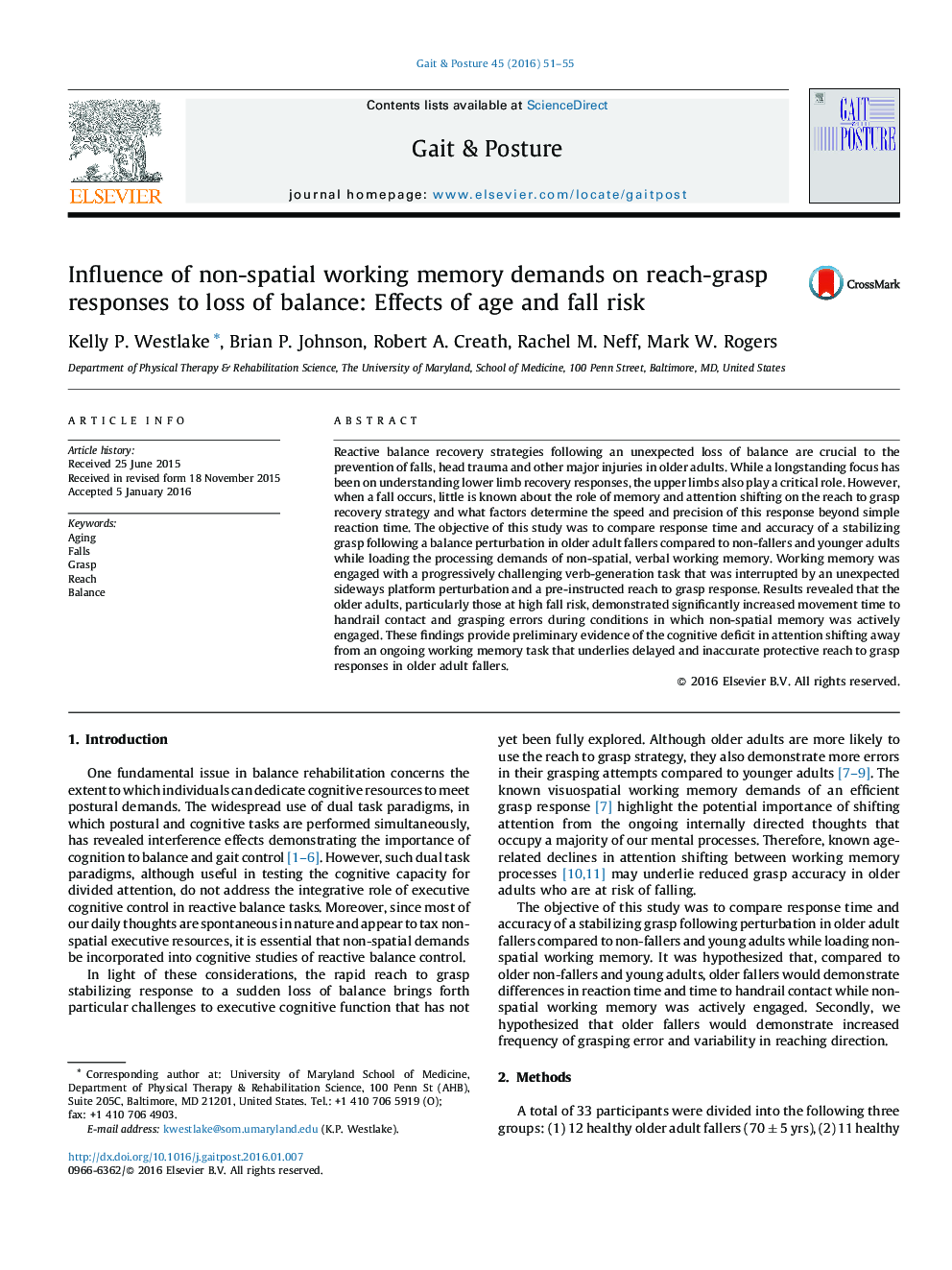| Article ID | Journal | Published Year | Pages | File Type |
|---|---|---|---|---|
| 4055983 | Gait & Posture | 2016 | 5 Pages |
•Reach to grasp balance responses were studied under non-spatial working memory loads.•Fallers demonstrated slowed movement time and decreased grasp accuracy.•Older adults resorted to non-specific reach direction compared to younger adults.•Attention shifting should be explored as a balance rehabilitation strategy.
Reactive balance recovery strategies following an unexpected loss of balance are crucial to the prevention of falls, head trauma and other major injuries in older adults. While a longstanding focus has been on understanding lower limb recovery responses, the upper limbs also play a critical role. However, when a fall occurs, little is known about the role of memory and attention shifting on the reach to grasp recovery strategy and what factors determine the speed and precision of this response beyond simple reaction time. The objective of this study was to compare response time and accuracy of a stabilizing grasp following a balance perturbation in older adult fallers compared to non-fallers and younger adults while loading the processing demands of non-spatial, verbal working memory. Working memory was engaged with a progressively challenging verb-generation task that was interrupted by an unexpected sideways platform perturbation and a pre-instructed reach to grasp response. Results revealed that the older adults, particularly those at high fall risk, demonstrated significantly increased movement time to handrail contact and grasping errors during conditions in which non-spatial memory was actively engaged. These findings provide preliminary evidence of the cognitive deficit in attention shifting away from an ongoing working memory task that underlies delayed and inaccurate protective reach to grasp responses in older adult fallers.
